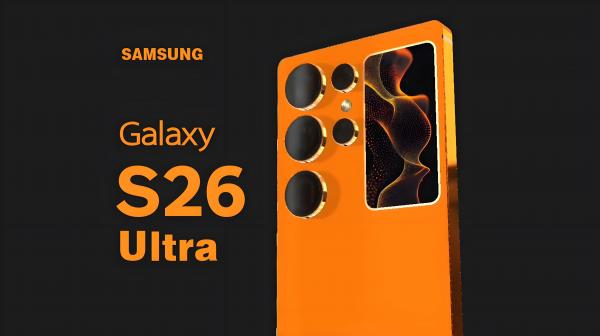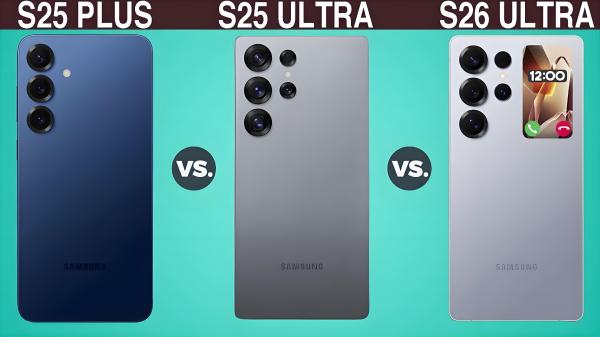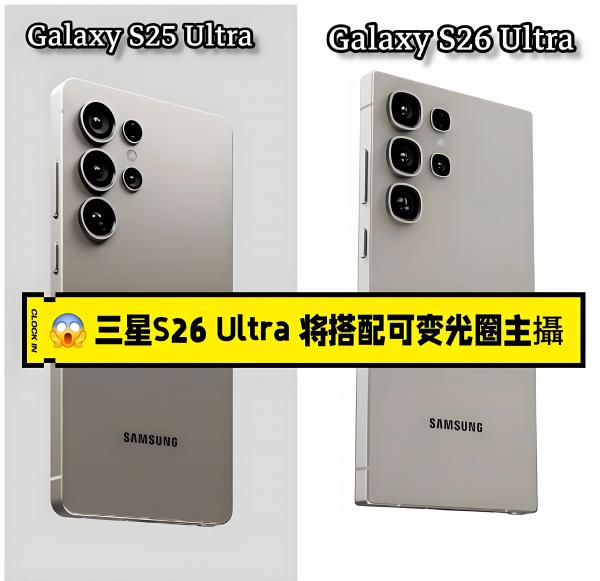Samsung Galaxy S26 Ultra: Unleashing Explosive Performance and Innovation!
![]() 07/07 2025
07/07 2025
![]() 454
454
This year, the flood of leaks surrounding the Galaxy S26 Ultra has surpassed all previous years in both density and intensity. It is poised to be a pivotal generation for Samsung, balancing "hardware conservatism" with "algorithm innovation." Foreign media has bluntly remarked, "It may seem incremental on the surface, but there are hidden currents beneath."

Firstly, let's talk about the design. Multiple sources have confirmed that the S26 Ultra will be even slimmer, with an expected thickness below 8mm and a weight lighter than the previous generation's 232g. This is primarily due to a redesign of internal components and a reduction in space occupied by the S Pen module. The S Pen may shift to a magnetic external attachment, offering a sleeker profile but potentially requiring users accustomed to heavy handwriting to adapt.
The screen remains at 6.9 inches with QHD+ resolution but pushes the refresh rate to 1-144 Hz under LTPO 4.0 technology, boosting peak brightness to 3,000 nits for an enhanced HDR viewing experience outdoors. Samsung continues to use Gorilla Armor glass paired with a new anti-glare coating, along with narrower bezels, internally dubbed a "lit screen with no visible boundaries."
The camera system retains the 200 MP HP2 main sensor but introduces rumors of an f/1.4-f/4.0 variable aperture, aiming for a new balance between strong light tolerance and night photography purity. All three auxiliary cameras have been upgraded to 50 MP: an ultra-wide for landscapes, a 5× periscope telephoto for distant shots, and another 3× telephoto for medium-distance portraits. While specifications may not seem significantly higher, the system excels in algorithm fusion. Industry insiders describe this as "subtle hardware tweaks and aggressive algorithms," focusing on detail consistency and color coherence.

Performance-wise, the global version will uniformly feature the 3nm Snapdragon 8 Elite 2 with an upgraded core architecture to Oryon V3, offering a roughly 30% improvement in single-core performance compared to the V1 era. Coupled with an enhanced VC heat dissipation system, it maintains stable frame output even for 144 Hz high-frame games. Rumors in Europe suggest the preparation of the Exynos 2600, but the Ultra model is said to exclusively adopt Qualcomm's solution to ensure seamless coordination between the image ISP and AI coprocessor.
Battery capacity is a hot topic of discussion. Some claim Samsung will stick to its six-year streak of 5000 mAh, while others suggest testing new silicon-carbon cells ranging from 5500 to 6000 mAh. The consensus is that charging power will jump from 45W to 65W, potentially charging nearly 80% of the battery in about 30 minutes, officially matching domestic flagships. If the capacity stays at 5000 mAh, Samsung will rely on One UI 8's AI power-saving features to mitigate potential disadvantages.
AI experience is the S26 Ultra's second main axis of innovation. One UI 8 introduces full-link Galaxy AI, including local large models and the cloud-side Perplexity semantic engine, supporting functions like circular search, two-way real-time call translation, and AIGC image enlargement. It also opens up the third-party plugin layer for the first time. Samsung internally claims that the ProVisual Engine for post-image processing integrates large model noise reduction and frame synthesis, resulting in a 30% improvement in resolution for 50× digital zoom in night scenes compared to the S25 Ultra.
The release date adheres to the "Unpacked at the end of January each year" schedule, and the IMEI database has already listed the SM-S948U/N model, indicating global mass production plans are on track. The estimated starting price is expected to remain at $1199, with the Chinese version likely starting at 7499 yuan. If silicon-carbon batteries or magnetic S Pen sets are adopted, the top-tier version may see a slight price increase.

In reviewing the key upgrades for this generation—144 Hz screen, 200 MP variable aperture, AI imaging, 65W fast charging, potential magnetic pen, and lighter body—some criticize it as "incremental improvements," while others praise it for "breaking through hardware limits with algorithms." In the 2025 era of parameter and material stacking, the S26 Ultra chooses to stabilize its flagship status through a combination of software and hardware, marking a shift in product philosophy: away from blindly pursuing large batteries or excessive RAM, and towards a focus on "endurance, lightness, and intelligence." If you prioritize changes to the S Pen, battery specs, and the scale of hardware upgrades, it may seem conservative. However, if you value AI experience, all-day comfort, and image style consistency, the Galaxy S26 Ultra could be the new flagship benchmark that "looks similar but feels vastly different."






